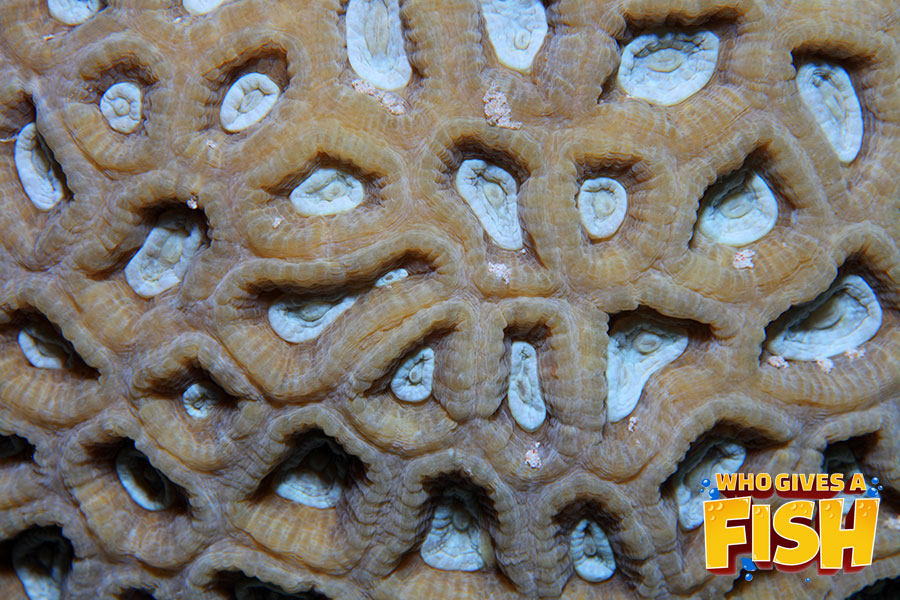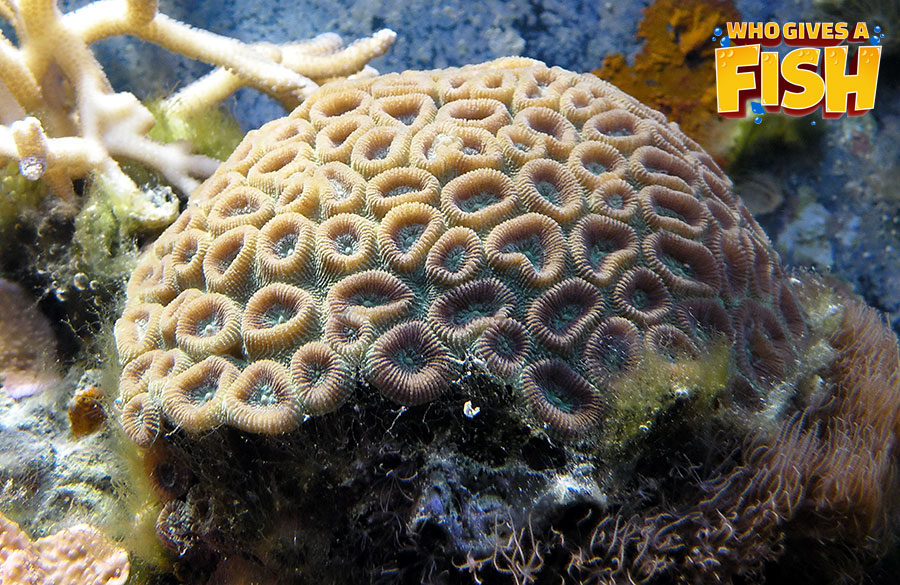Trumpet Coral
The Trumpet Coral, Caulastrea echinulata, have polyps that grow close together and are shaped like the horns found on a trumpet – hence its name. Each of these polyps will grow on its own stalk, but these are tightly compacted together. This species name is derived from the fact that its oral disc is found much deeper inside, with corallite walls that are much taller than those found in other Caulastrea species.
Some other names that it is known by are the Column Brain Coral, Spruce Caulastrea and the Green Trumpet Coral.
- Experience Level: Beginners
- Hardiness: Moderate
- Minimum Tank Size: 50 gal (190 L)
- Lighting Needs: Low to moderate
- Temperature: 74° – 83° F (23° – 28° C)
- Gravity: 1.023 – 1.025
Table of Contents
Introduction
Aquarium Setup
Difficulty
Feeding
Breeding
Social
Each stalk from the Trumpet Coral has polyps on the top that have long, winding, thin corallites. As an example, some of the corallite can look like a stretched version of the number “3”, a thin letter “B” or even an hour glass and some designs with even more twists and several mouths. This combined with the fleshy tops of its oval like polyp heads, creates the image of a trumpet.
These polyps are often wildly shaped with many twists and turns in them per polyp. It is not often that you will see a perfect oval shape unless they are still young. These unusually shaped polyps will be tightly packed next to each other, and when they fully expand they will make the coral look even more solid and non-branching. Rounder corallites will have polyps around 10-12 mm in diameter.
Trumpet Corals are generally solid in color, often with some striations in them and with not much color contrasting to its center. They will be a brownish pink to gray color with some specimens acquiring a more pale green coloring. The Candycane Coral, C.furcata, is far more colorful in comparison to the Trumpet Coral.
Aquarium Setup
A healthy, well fed aquarium with live rock is required for the Trumpet Coral. Fish creating organic material will also be beneficial for them. It is recommended with all corals to have a mature tank before adding them.
Ensure you supply them with decent water movement and provide enough lighting. The Trumpet Coral like low-medium strength lighting and are very sensitive to direct light from metal halides. Indirect lighting from these is essential. The Trumpet Coral will expand in the morning hours prior to lights coming on and will extend a circle of long tentacles, similar to that of the pistols seen in a flower. When theses tentacles are out, they can be fed but it’s not absolutely necessary to do so. They are classed as a semi-aggressive species when placed near to other corals.
Trumpet Coral Aquarium and Parameter Checklist
- Minimum Tank Size: 50 gal (190 L)
- Lighting Needs: Low to Moderate, diffused light. No direct light
- Temperature: 74° – 83° F (23° – 28° C)
- Specific gravity: 1.023 – 1.025
- Alkalinity Levels: 3.5 – 4.8 MEQ/L (8 – 11 dKh)
- Calcium: 400 – 430 ppm
- Phosphates: 0 (Avoid Phosphates)
- Magnesium Levels: 1200 – 1350
- Strontium Levels: 8 – 10
- Water Movement: Turbulent
- Tank Region: All, provided you accommodate the lighting and water flow requirements
Difficulty
The Trumpet Coral is easily cared for and a nice beginner coral. They like low-medium strength lighting and are very sensitive to metal halides – indirect lighting from these is essential. They enjoy low-moderate water flows but enough that they no dot get detritus built up between their tightly packed branches and polyps.
Feeding
The Trumpet Coral feeds through a symbiotic relationship with a marine algae, and this is how they receive some of their nutrients. They will also capture planktonic organisms, and other food particles in the water that pass with the water flow.
In your aquarium, they can be fed when their tentacles are protruding, although this will happen if any food in close proximity is detected. Mysis, and similar sized foods do well if finely chopped/minced. For manual feeding, you can stop your water flow temporarily to give it a chance to consume any food you place on it.
Breeding
LPS corals are male and females and will reproduce both sexually and asexually. In the wild they will reproduce sexually by releasing sperm and eggs into the water, resulting in the eggs being fertilized which turn into free-swimming planula larva. These will eventually settle in a new area on some substrate, becoming plankters. These will then form tiny polyps that will excrete calcium carbonate as it develops into a coral. Unfortunately, Planula larvae are very vulnerable to predation and only few of these ends up surviving.
The Trumpet Corals are hermaphrodites that are able to fertilize externally during large spawning events. They can also reproduce asexually as well. In a captive situation, the Trumpet Coral can be fragged, and can also be done by intratentacular budding, this is when a polyp will divide into more polyps and will then pinch off into a new branch. Fragging is very simple and easy to do with this genus. All you need to do is cut off the branch that has the heads you want using a bone cutter or something that will give you a nice clean cut.
You just need to be careful that you don’t cut too close to the polyps and cause a fracture in the branch which will tear the flesh of the polyp. This often happens if your tool is not sharp enough.
If all goes well, give plenty of water flow to these new frags after they have been joined to a piece of rubble or a plug. If the branch is big enough, they can be easily slotted into nooks of live rock without needing to be attached to a new plug.




Social
Caulastrea Corals are classed as semi-aggressive corals when housed close to other corals, so it is essential that they are given space when placed in your tank. Just because a coral has shorter tentacles doesn’t mean it’s a safe coral.
The Trumpet Corals sweeper tentacles are only 2” long but are known to pack a big punch when needed and will have a stronger sting to them than some corals with 6” long sweepers. E.g. if a C.enchinulata is to invade the Trumpet Corals space, it will be harmed.
In the ocean, Caulastrea Species are quite often found to be living with zoanthids, mollusks, commensal sponges and some sessile inverts. Some Trumpet Corals can be found with Zoanthids growing amongst their heads which don’t seem to bother them at all.
Back to top